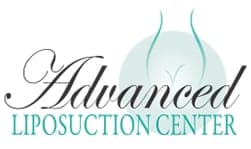Hyaluronic Acid
Hyaluronic Acid
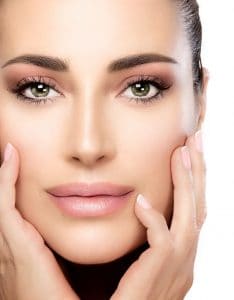
More than just a moisturizer— scientifically supported benefits of Hyaluronic Acid (HA).
Hyaluronic Acid—it’s the active ingredient in many of the most ultra-premium facial products available today. It’s usually known simply by its abbreviation (HA), and is also sometimes called Hyaluronan. The Health and Beauty Industry is currently in love with this amazing substance, and with good reason. Yet what actually is HA, and what does it do?
It’s true that facial moisturizers and serums has recently pushed Hyaluronic Acid into the spotlight. If you’ve heard about it before reading this that’s probably why. Yet it’s been used for years in multiple branches of medicine with fantastic results. Research is currently being done into further uses for the incredibly useful stuff, as well.
It’s also a naturally occurring compound which is found throughout the body. This means it’s almost entirely free of side effects across all of its many uses. Holistic medical practitioners and other natural health experts recognize HA as a safe, effective treatment for several common conditions.
The benefits of Hyaluronic Acid (HA):
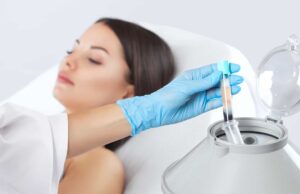
- Increased hydration and intense moisturizing.
- Anti-aging effects.
- Improved skin elasticity.
- Fine line and wrinkle reduction.
- Faster wound healing.
- Increased volume.
- Can effectively treat some cases of eczema.
- Reduces facial redness
- Evens out skin tone and reduces blotchiness.
So how does HA accomplish these things? The answer is surprisingly simple. Hyaluronic Acid is what is known as a humectant, a substance that absorbs and retains moisture. It’s very efficient, and can hold about 1000 times its mass in water to keep the skin properly hydrated.
The structure of Hyaluronic Acid is responsible for its miraculous sponge-like ability. First off, Hyaluronic Acid isn’t a corrosive liquid, as the word “acid” implies. It’s actually a very complex carbohydrate known as Glycosaminoglycans. We’ll talk more about the shape and characteristics of the HA molecule later.
Each HA molecule branches thousands of times in a “bottle-brush” arrangement. Water molecules are drawn into the spaces between each “bristle” and become trapped there. This makes HA an obvious choice when formulating moisturizers and other skincare products—nothing holds onto moisture better.
Hydration of Skin
Skin that is well hydrated has a high water content for 2 primary reasons. The first is, not surprisingly, the patient’s daily water intake. Dehydrated patients will have dehydrated skin that’s not as healthy as it could be. The second factor is known as Transepidermal Water Loss, or TEWL. This refers to the rate at which water evaporates from the skin. Hyaluronic acid has been shown to reduce TEWL by drastically reducing surface evaporation.
Several small studies have indicated that Hyaluronic Acid can help wounds heal better and faster, as well. More research is needed to fully understand and measure this effect. It is reasonable to believe that well-hydrated skin will heal more efficiently, however.
If you need more plumping than hyaluronic acid can add, there is more in formation on our facelifts and other procedures for reducing wrinkles and increasing the youthfulness of the face.
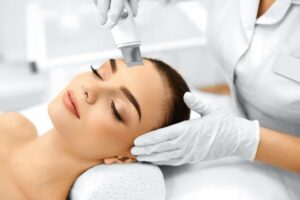
Does scientific evidence support using Hyaluronic Acid (HA)?
Yes. Several large, well designed studies have shown that Hyaluronic Acid improves overall skin health when used regularly. Skin elasticity, roughness, and average wrinkle depth were all positively impacted. Yet, as alluded to above, not all varieties of HA work equally well. Others may even be harmful.
It was determined that benefits depend on the molecular weight of the HA molecules in the serum being used. Molecular weight can be understood as how large a molecule is, and is measured in Daltons. This unit is actually 1,000 Daltons, so it’s usually abbreviated as kDa (killodalton). Put simply, molecules of different sizes performed very differently when applied as part of a skincare regimen.
A comprehensive study was performed using serums containing HA molecules ranging from 50-1000 kDa. The maximum improvement in skin elasticity, texture, and wrinkle depth was found using 130 kDa molecules. This finding was later verified by a larger study which used serums containing 50, 100, 130, 300, and 2,000 kDa.
Serums tended to become less effective as the size of the molecules went past 130 kDa. It is thought that these very large molecules have difficulty penetrating the skin. They can still attract and hold water, yet will wash off shortly after applied. Extremely small, short chained HA molecules of less than 50 kDa were found to actually promote inflammation. This is not a desirable quality in an ultra-premium anti-aging serum.
So what type of HA is in your serum? It almost certainly contains around 2% HA with a molecular weight of around 130 kDa. This formulation has proven itself capable of improving the above mentioned signs of aging by 20% after only 1 month.
Selecting the right form of Hyaluronic Acid (HA)
Not all forms of Hyaluronic Acid, or HA, are created equal when it comes to penetrating the skin. Previous research has shown that smaller HA molecules are absorbed by the skin more easily. These “Nano-Hyaluroid Acids” have considerable research backing up their ability to:
- Increase skin elasticity, especially around the eyes.
- Decrease the depth of wrinkles.

- Reduce or eliminate the appearance of fine lines.
- Increase the skin’s overall ability to retain moisture.
- Provide a moderate increase in skin volume.
The chemistry behind HA is extremely complex—an HA molecule can come in literally millions of shapes, sizes, and configurations. The following, known as Nano-Hyaluroid Acids, are the ones found in most commercially available products:
- Sodium Hyaluronate
- Sodium Acetylated Hyaluronate
- Hydrolyzed Hyaluronic Acid
Most reputable, high-end products will contain one or more of these varieties. This isn’t to imply that other HA molecule types won’t work, and some products contain more exotic forms. Research into the chemistry of Hyaluronic Acid is ongoing. Yet for now, the three varieties mentioned above offer the best performance for their price.
The premium Hyaluronic Acid serum used by Body Beautiful Laser Medi-Spa contains all three forms of HA. It is used during nearly all Micro-Needling treatments, and can also be applied using a specialized skin-roller.
Hyaluronic Acid is a superior humectant.
The term “humectant” refers to any substance which draws in and holds water. All moisturizing products contain various humectants. Examples commonly found in the skin-care world include hexylene, butylene glycol, and simple glycerine. The sugar alcohol sorbitol is also frequently used as an inexpensive yet effective option. Other health and beauty products, ranging from shaving creams to shampoos, also contain humectants.
Hyaluronic Acid (HA) is an extremely efficient humectant, as it can absorb and retain many times its weight in water. In its pure form this compound appears as a thick, viscous, and perfectly clear gel. HA is substantially more expensive than other humectants, so it’s almost always included as one of several active ingredients. A typical super-premium daily serum will contain around 10% HA.
A unique property of Hyaluronic Acid as a humectant is its long-lasting effect. The HA in your serum, once absorbed into the skin, will continue to attract and retain moisture for hours. This is one of the main reasons why products containing this ingredient outperform their less-expensive counterparts.
Hyaluronic Acid fortifies the skin’s lipid barrier.
One of the main (and obvious) functions of our skin is to protect everything that’s underneath it. This protective function ensures that our muscles, blood vessels, nerves, and organs are shielded from the potentially harsh environment. It is the fatty lipid barrier, found in the skin’s top layer (epidermis), which provides much of this protection.
Young, healthy skin has a thick, well-defined and fully functional lipid barrier. The fatty acids which make up this protective barrier aren’t impervious to damage, however. Environmental toxins, poor lifestyle choices such as smoking, and excessive sun exposure can all cause them to degrade.
This damage to the lipid barrier is, to a large extent, irreversible. Yet the Hyaluronic Acid (HA) found in many high-end moisturizing products can fortify what remains. It’s not a permanent solution, but HA can help this protective layer perform its protective role. This is one of several ways in which Hyaluronic Acid allows older skin to look (and feel) years younger.
Hyaluronic Acid strengthens the skin’s defenses.
Properly hydrated skin with a healthy lipid barrier will have a naturally enhanced resilience to daily damage. A product containing Hyaluronic Acid (HA) helps the skin maintain this critical moisture balance.
Proper daily care, including a high quality HA serum, prevents overall or “global” skin health. In practice this means that consistent use of a Hyaluronic Acid containing product has a preventative effect. HA containing products can prevent some problems before they can begin.
Hyaluronic Acid is also extremely gentle, which makes sense since your body produces it naturally. It won’t harm the billions of beneficial bacteria which call your skin home, and is even thought to help them flourish. These helpful organisms then keep harmful bacteria populations in check.
Acne is the primary example. Harsh anti-acne products often focus on scrubbing the skin clean, removing natural oils and killing beneficial species. Acne bacteria then rapidly recolonize the face, possibly resulting in a “rebound” breakout. This becomes a vicious cycle for many patients, sometimes resulting in cystic acne, pitting, or scars.
Our culture has become increasingly germ-phobic in recent years, and for the most part that’s a good thing. Yet an important (and sometimes overlooked) part of keeping your skin healthy is allowing the right bacteria to thrive. For many patients, daily use of prescription serums containing very high percentages of HA helps maintain this delicate balance.
Hyaluronic Acid tightens the skin.

Thin, dry, sagging skin is one of the most visible signs of aging. The protein Elastin is responsible for much of your skin’s elasticity or “bounceback.” Youthful, healthy skin has plenty of Elastin, which accounts for its firm tone. You can easily check your own (or someone else’s) Elastin with the “bounceback” test. Simply pinch the skin on the back of your hand, and observe how fast it returns to its original position.
Older adults will almost always have decreased elasticity as measured by this test. This is because Elastin naturally degrades as we age. The damage is unfortunately permanent, as there’s no way to repair damaged Elastin. Yet Hyaluronic Acid (HA) moisturizers and serums can make the skin appear as if it’s more plump and supple. It adds volume as it absorbs water, subtly firming facial contours for a more youthful look.
This changes the overall environment of the face by adding an external moisture barrier on a practically permanent basis. Individual cells are then less susceptible to toxins, free radicals, UV damage, and a host of other daily stressors. By itself this won’t improve cell regeneration. It will, however, help existing cells stay healthier for longer periods of time. The final result is healthier skin which can appear years or even decades younger than its physical age.
Hyaluronic Acid helps prevent pigmented spots.
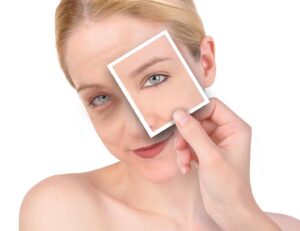
Sun spots, age spots, and liver spots are common pigmented lesions associated with aging. They typically appear as flat or slightly raised light to dark-brown roundish lesions. The borders of these spots should always appear smooth and uninterrupted. Lesions with irregular borders can signify much more serious conditions, namely skin cancers such as melanoma. Any suspect lesion should be evaluated by a dermatologist immediately.
Hyaluronic Acid (HA) has a well-established track record of providing facial skin with an enhanced base level of protection. The formation of unwanted pigment spots can be slowed down (or avoided entirely) simply by proper daily skincare. This includes use of an HA moisturizer or serum for many patients.
A high-quality sunscreen is also central to any skincare regimen. A Sun Protection Factor (SPF) of 30 or greater is recommended. Treatment for pigment irregularities, such as skin resurfacing lasers, can’t begin until ongoing damage from Ultraviolet (UV) light stops. This includes sources like the sun and artificial sources such as tanning bulbs. Adequate sun protection should be worn at all times, even on days where you don’t plan on being outdoors.
Hyaluronic Acid promotes clear skin.
Many people, including some healthcare professionals, falsely believe that those with oily skin shouldn’t use a moisturizer. This idea makes sense on the surface. Yet the oil your skin produces (sebum) and the water content of skin (a.k.a. hydration) are very different.
Many alcohol-based or astringent cleansers strip away unwanted oil as well as removing surface moisture. The skin will then produce excess oil to compensate, clogging pores and potentially causing breakouts. This often sets up a cycle where the cleanser is being used to treat the excessive oil it’s causing.
Moisturizers which contain Hyaluronic Acid (HA) encourage an optimal moisture balance. It is then no longer necessary for the skin to over-produce oil, resulting in fewer breakouts over the long-term. HA products are usually higher-end as well, so won’t contain lower-quality, oily humectants which can themselves clog pores.
It’s also a good idea to select an HA product which contains Vitamin-C. This ingredient is inexpensive and several large, well-designed studies link it to fewer yearly breakouts in acne prone individuals.
Anti-aging
The skin contains around 50% of the body’s total hyaluronic acid. Wrinkles can develop as a result of modifications in this quantity, which may be brought on by UV exposure.
In addition to improving skin firmness and elasticity, hyaluronic acid can dramatically lessen the depth of wrinkles.
According to Trusted Source, for eight weeks, ladies applied hyaluronic acid topically twice daily.
According to the study, those who applied the acid saw up to a 40% reduction in the depth of wrinkles and up to a 55% improvement in skin firmness and elasticity.
Are there potential side effects or complications that might result in additional costs?
Yes, while hyaluronic acid treatments are generally considered safe, there are potential side effects and complications that might result in additional costs. These can include:
- Bruising: Bruising at the injection site is a common side effect and may require additional cosmetic treatments or concealers.
- Swelling: Some swelling is normal after injections, but if it persists or is excessive, additional treatments may be needed.
- Infection: In rare cases, there is a risk of infection at the injection site, which may require medical attention and additional costs for treatment.
- Allergic reactions: Though uncommon, allergic reactions to hyaluronic acid can occur, necessitating medical intervention and additional costs.
- Asymmetry or irregularities: If the filler distribution leads to asymmetry or irregularities, corrective measures may be needed, possibly incurring additional costs.
- Nodules or lumps: Rarely, small nodules or lumps may form under the skin, and addressing these concerns may involve additional procedures.
How often are maintenance treatments required, and do they add to the overall cost?
The frequency of maintenance treatments for hyaluronic acid varies based on several factors, including the type of filler used, individual metabolism, and the specific treatment area. Generally, the effects of hyaluronic acid fillers are not permanent, and follow-up sessions are needed to maintain the desired results.
Maintenance treatments are typically required every 6 to 12 months, but this can vary. The need for touch-ups depends on how quickly the body metabolizes the filler and the longevity of the specific product used.
Yes, maintenance treatments do add to the overall cost of hyaluronic acid procedures. It’s important to consider the long-term financial commitment when opting for these treatments. During the initial consultation, your healthcare provider can provide information on the expected duration of results and discuss the recommended schedule for maintenance sessions, helping you plan for the associated cost
Does Overuse of Hyaluronic Acid Cause Skin Problems?
Yes, overusing anything isn’t healthy for you and Hyaluronic acid is no exception, as it can lead to some skin problems. Normally, Hyaluronic acid is known for it’s hydrating properties, but if you apply it excessively or in very dry conditions then it might backfire, since if there isn’t enough moisture in the air then Hyaluronic acid will pull water from deeper skin layers, which can cause dryness, irritation and tightness. If you apply too much hyaluronic acid then it might lead to creating a sticky residue and reduce product absorption, which can be annoying. If you want to avoid all these complications use hyaluronic acid in damp skin, seal it with moisturizer and limit application to once or twice daily. However, even if irritation manages rise, try reducing the usage or switch to a lower concentration.
What Is The Best Age To Start Hyaluronic Acid?
Fortunately, there’s no set age to start hyaluronic acid but most people start using it in their 20s as that’s the popular age fir starting skincare routine as well. This is the age when collagen and moisture levels start to decline, so using hyaluronic acid can easily make up for that. Furthermore, HA is great fir maintaining hydration, elasticity and plumpness, which can help you prevent premature fine lines, making you look much younger. If you are young, it’s best to use lightweight hyaluronic acid serum which provides decent hydration without any heaviness. If you are in your 30s or beyond that, then hyaluronic acid can be combined with aging ingredients to boost skin firmness. Even fir teenagers, hyaluronic acid is great as it’s gentle and non-irritating, which can help them out with acne and dry skin. Which allows them to use it safely for moisture balance.
